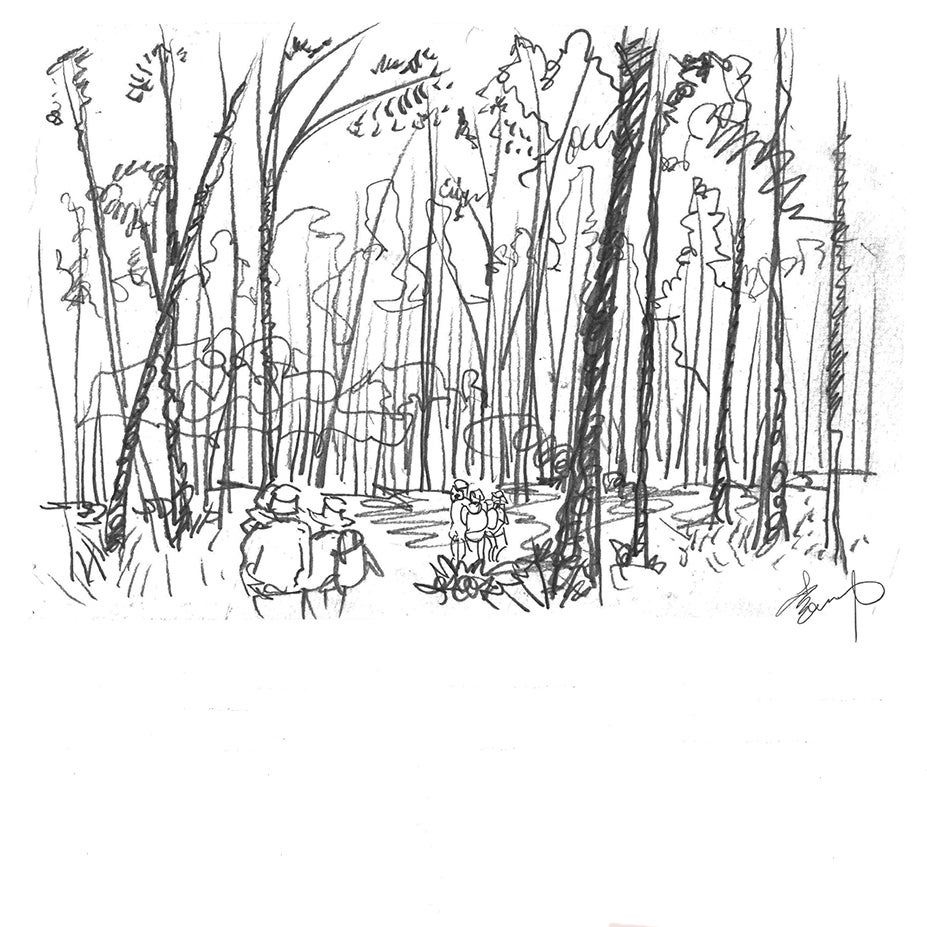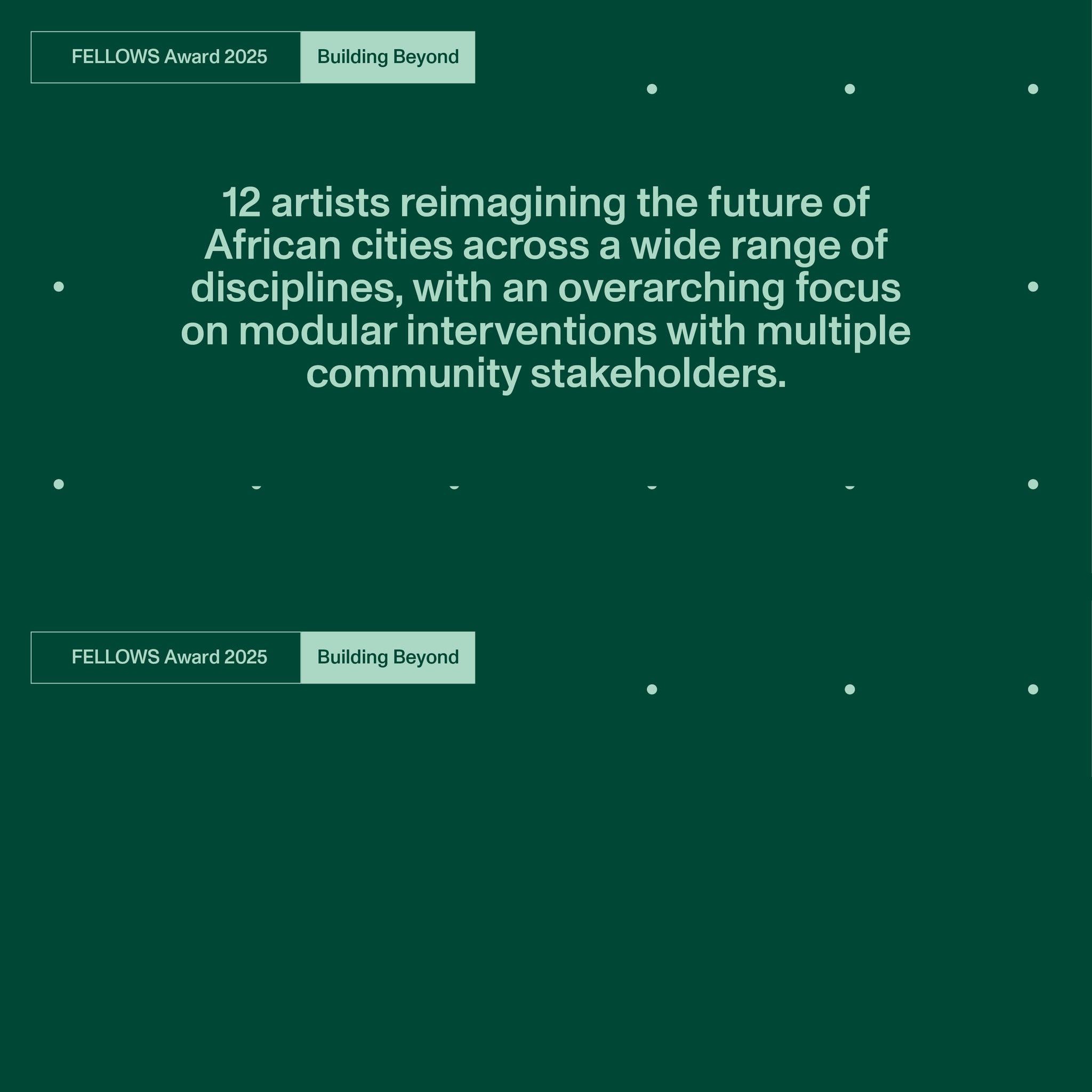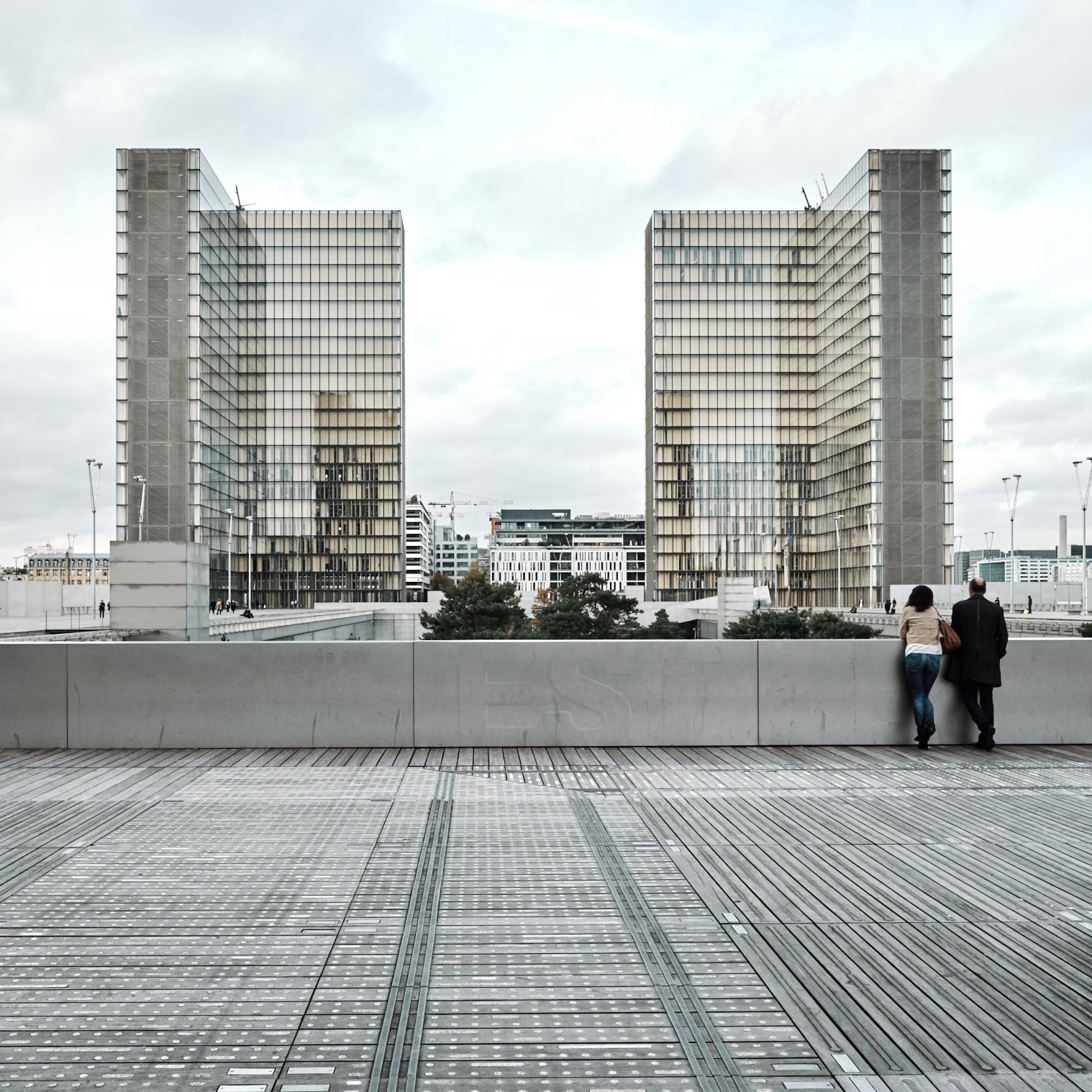
Faculty and Student Team to Create Sustainable Solutions for Paper Waste on Grounds
The Jefferson Trust Board of Trustees has awarded $1.5 million to 17 new projects and programs for their 2024-2025 grant cycle.
Student experiences, enhancing student learning through internship and research opportunities, and community outreach were key grant themes this year.
"Only the Jefferson Trust and it Trustees can fund a concert series and a dark matter telescope in a single afternoon. Project diversity is a hallmark of this organization, and it is thrilling to see how each shapes the University and student experience over time," said Brent Percival, Executive Director of the Jefferson Trust.
This year's awarded projects include the School of Architecture's Possibilities in Pulp: Reusing Paper Waste on Grounds initiative that aims to reduce paper waste at the school by developing and testing paper pulp manufacturing techniques, and piloting strategies for scaling this process for long-term use.
Possibilities in Pulp: Reusing Paper Waste on Grounds: $15,000
Project Team
Irem Cavus, Jena Lahham, Emma Lohr, and Cole Rozwadowski (student leads), The Society of Sustainability
Kyle Schumann (faculty lead), Assistant Professor of Architecture
Background
Possibilities in Pulp builds on the success of sustainable material initiatives (such as UVASawmilling, JunkLabz) by closing the paper waste loop in the School of Architecture, which consumes over half a million square feet of paper annually.
The initiative is a collaboration between The Society of Sustainability, a student group based in the School of Architecture that is working with the administration to implement sustainable practices in its own academic community, and faculty lead Kyle Schumann. One of the group’s current initiatives is to replace petrochemical foam as an architectural model-making material with viable sustainable alternatives. The Society of Sustainability asked faculty at the school to identify opportunities to merge research with their initiatives, leading to the award-winning Possibilities in Pulp proposal.
One of The Society of Sustainability student leaders Cole Rozwadowski (BSArch '26) said —
"I'm incredibly excited to see how this research can help close
paper waste loops in the School, addressing dual issues of
material waste and petrochemical foam use."
"I'm also grateful to Kyle for championing our initiatives in his own pedagogy and research as students and faculty collaboratively work toward a more just and sustainable future for everyone here at the School."
Paper Waste
In 2023, students in the School of Architecture printed 505,254 square feet of paper (data provided by UVA School of Architecture IT). At over half a million square feet, this quantity of paper is over four times the square footage of Campbell Hall, the school's primary facility. Printing drawings and other architectural representations is a critical part of coursework and learning in the school, but produces a massive amount of waste that ends up in the trash or recycling bin at the end of each semester.
Paper waste is not a challenge unique to the School of Architecture and the project team has identified it as a large untapped resource across Grounds.
|
Image

|
Image

|
| Printing drawings and other architectural representations is a critical part of coursework and learning in the School of Architecture, but produces a massive amount of waste that ends up in the trash or recycling bin at the end of each semester (images by Tom Daly). | |
Paper Pulp
Schumann has recently taught several undergraduate design studios that give students hands-on experience with sustainable materials and fabrication processes. As a part of these courses, several students have developed methods for turning paper waste (sourced from within the school) into other usable products, including modular seating made of paper pulp and colorful façade shingles made of paper pulp sealed with sustainable soy wax.
These paper pulp shingles were used to clad a full-scale installation at UVA’s Morven Farm which received recognition for innovation in material, design, and fabrication research. The project was selected for a student design award in the 2022 American Institute of Architects Central Virginia Bi-Annual Design Awards and the 2023 Design-Build Award from the Association of Collegiate Schools of Architecture.
Building on this proof-of-concept research, The Jefferson Trust grant will support a pilot program to further develop and test paper pulp manufacturing techniques, and pilot strategies for scaling this process for long-term use.
|
Image
|
Image

|
| Assistant Professor Schumann and students in a recent studio developed proof of concept research on paper pulp manufacturing techniques (Images courtesy of K. Schumann). | |
"I am thrilled by this support from The Jefferson Trust, which will enable students in the School of Architecture to pioneer new methods to close another waste loop on Grounds," said Schumann.
"This is a fantastic opportunity for School of Architecture students
to practice their values in forwarding a more sustainable future."
Funds will be used primarily for equipment needed to implement this process and wages for paid Student Research Assistants to develop this process. The project team will work to collect data on time, cost, and energy use to quantify the impacts of the process.
Material Alternatives
Last semester, over 170 students and 12 faculty signed a student-led petition to ban petrochemical foam from Campbell Hall, due to concerns over human health and environmental impacts of the material. Paper pulp material products developed by the team will be provided to students to test as a sustainable alternative to other common model making materials, including petrochemical foam.
Based on the research team's initial studies, paper pulp represents a versatile replacement for petrochemical foam, in part because it is able to be cut with both analog woodworking tools and with digital fabrication tools like the CNC router — equipment and processes that are regularly used by students in the school.
One of the team's primary goals is to use this pilot to test if this process can close the paper waste loop in the building, turning discarded paper into accessible material for student projects that can be provided for little to no cost to students. By reusing these products on site, or within the school, extends the useful life of the paper and reduces the energy and transportation costs of existing recycling processes.
Within and Beyond Campbell Hall
The team will collect feedback on the efficacy of this material for architectural models and other coursework or uses. This feedback will then inform further development and refinement of the pulp manufacturing process. By pursuing opportunities to publish the results of the work or utilize open source platforms to share the manufacturing process, the team aims to develop this resource for other schools, institutions, and students who can then close paper waste loops within their own communities.
While their methods will first be studied in the School of Architecture, the grantees will also seek to design and test other products or applications for the material that can be useful for students, the UVA library system, or other academic units across Grounds.
"Beyond improving material lifecycles and footprints within Campbell Hall, the project represents a greater aspiration for academic introspection and collaboration," shared Jena Lahham (MArch '26), who is one of the student leads on this project.
"This is an experiment for the imagination.
Environmentally-conscious design and practice is more pressing
than ever. I'm hopeful that this work will inspire faculty and students
to invest in adjacent alternatives while also setting a precedent
for universities across the country."
Proof of concept research for Possibilities in Pulp: Reusing Paper Waste on Grounds was developed in two recent courses, taught by Assistant Professor Kyle Schumann:
Circular Chromatics (ARCH 3021, spring 2022)
Student Instructor Assistant: Caitlin Kreinheder
Students: Caroline Abel, Teo Blazquez, Taylor Brown, Perri Dinnerman, Leigh El-hindi, Eric Guilfoyle, Chloe Hellerman, Ashley Kim, Stephen Liechty, Emily Rong, Marian Roshdy, Yianni Spears, Anna Wei, Aliyah White
Awards: ACSA Design Build Award (2023 Architectural Education Awards), Honor Award for Student + Emerging Architect (2022 AIA Central Virginia Bi-Annual Design Awards)
Pulp Furniture (ARCH 3021, spring 2024)
Student: Alex Cuenco-Olaya
The Jefferson Trust makes grants to innovative ideas that enrich the University of Virginia and the student experience. Founded by the University of Virginia Alumni Association in 2006, the Trust has invested over $15.8 million in student, faculty, and staff ideas, supporting the people and projects that strengthen the University of Virginia. Through its two grant cycles, the Trust will seek to award at least $1.6 million in 2025.
For more information on the Jefferson Trust, visit www.jeffersontrust.org.


